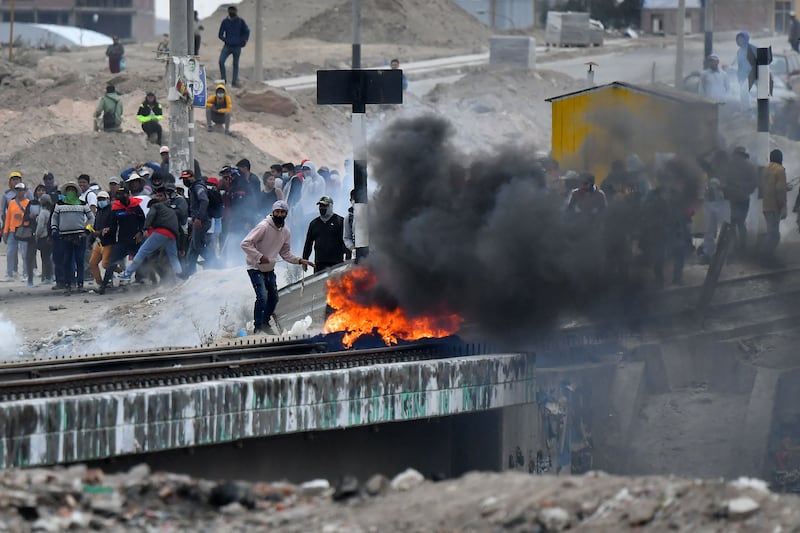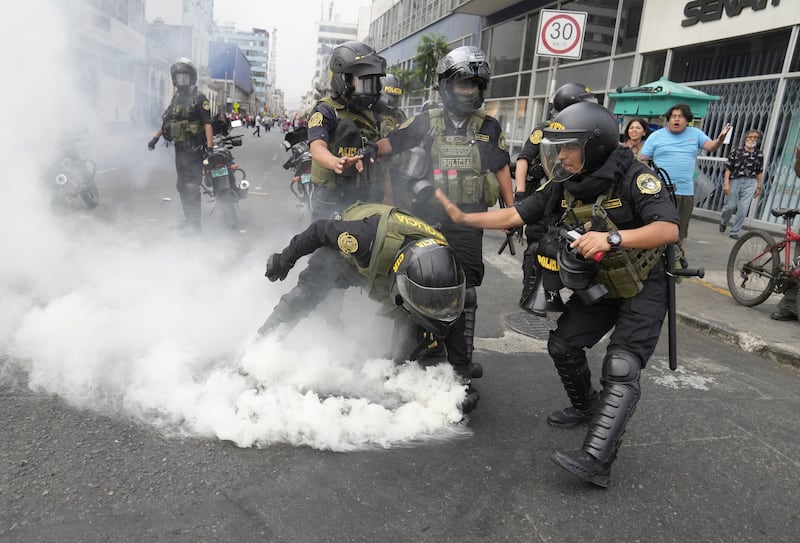Thousands of protesters took to the streets of Peru’s capital on Friday and were met with volleys of tear gas for a second day, as demonstrators made clear they will keep up their mobilisations to demand the resignation of president Dina Boluarte.
Many of the protesters in Lima had arrived from remote Andean regions, where dozens have died amid unrest that has engulfed large portions of the country since Pedro Castillo, Peru’s first leader from a rural Andean background, was impeached and imprisoned after he tried to dissolve congress last month.
José Luis Ayma Cuentas (29) who travelled for 20 hours to get to the country’s capital from the southern Puno region, which has been the site of the deadliest state violence over the past month, said: “We’re staying until she resigns, until the dissolution of congress, until there are new elections, otherwise we aren’t going anywhere.”
Until recently, the protests had been mainly in Peru’s southern region, with a total of 55 people killed and 700 injured in the unrest, largely in clashes with security forces.
READ MORE

Protesters now want Lima, home to around one-third of Peru’s population of 34 million, to be the focal point of the demonstrations that began when Ms Boluarte, who was then vice-president, was sworn into office on December 7th to replace Mr Castillo. The protests sparked the worst political violence in the country has seen in more than two decades.
At the beginning of Friday’s protests, the demonstrators took over key roads in downtown Lima waving flags while chanting: “The spilt blood will never be forgotten,” and “The people don’t give up.”
After standing watch over protesters that had been blocked into downtown streets police started firing volleys of tear gas.
Anger at the police was a constant throughout the march as demonstrators yelled “murderers” when they passed rows of officers wearing helmets and holding up shields.
As night fell, protesters were locked into running battles with police while some demonstrators threw water bottles filled with rocks at officers.

Late on Friday, interior minister Vicente Romero praised police action during the protests, saying that it “has been very professional”.
Protesters were particularly angry at Ms Boluarte for a defiant speech she gave on Thursday night in which she accused protesters of fomenting violence, vowed to prosecute demonstrators and questioned where they received their financing.
“You want to break the rule of law, you want to generate chaos so that within that chaos and confusion you take power,” Ms Boluarte said.
Ms Boluarte has said she supports a plan to hold fresh elections in 2024, two years ahead of schedule, but protesters say that is not fast enough.
Protests and clashes with police also took place in other parts of the country.
In Arequipa, Peru’s second city, officers clashed with protesters who tried to storm the airport.
Also in southern Peru, multinational firm Glencore decided to temporary shut down its Antapaccay copper mine after protesters attacked the site. – AP















